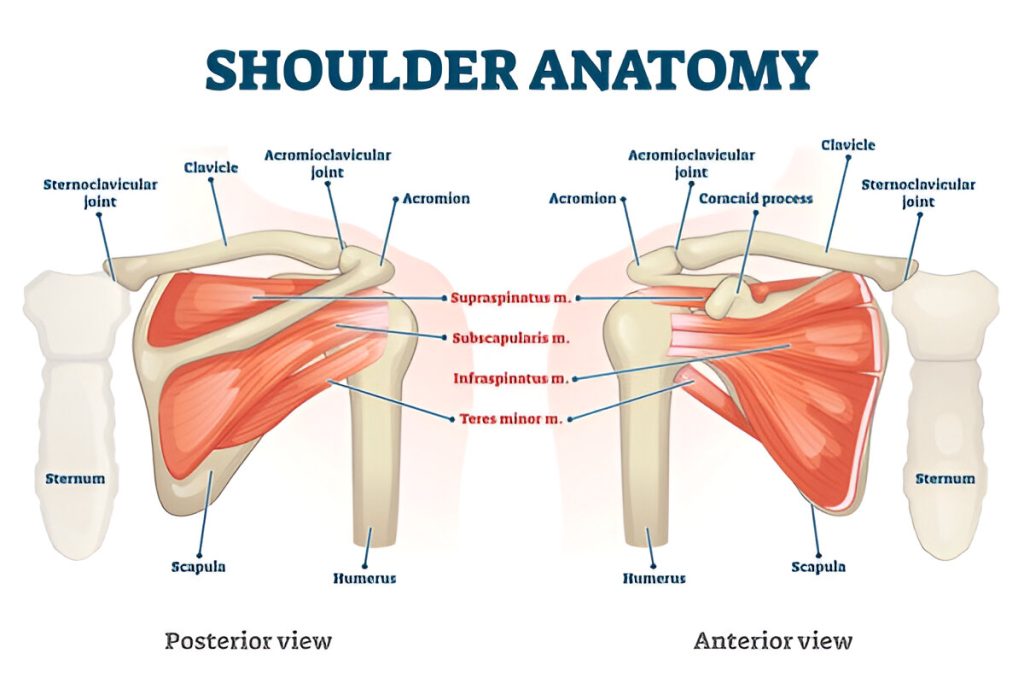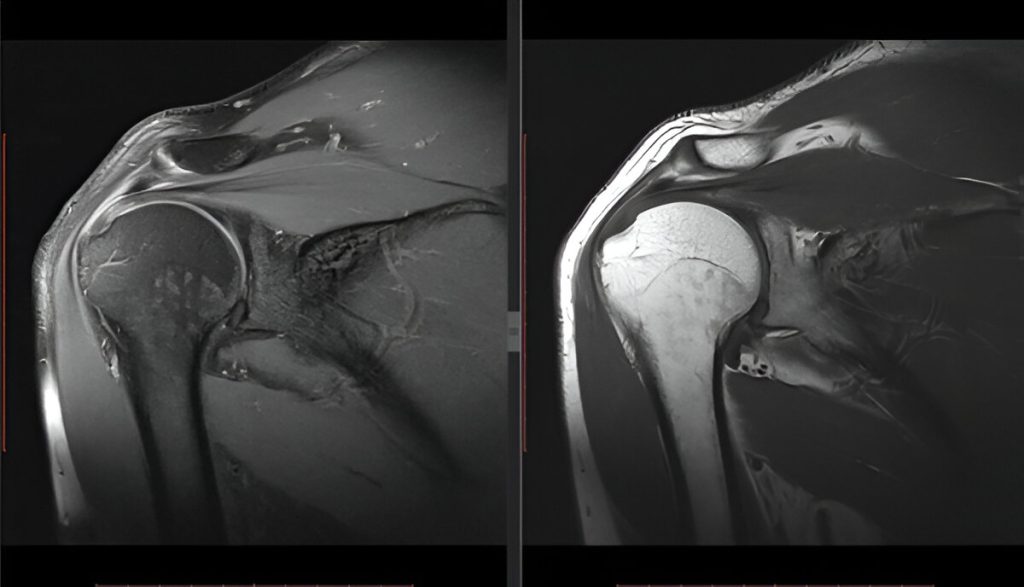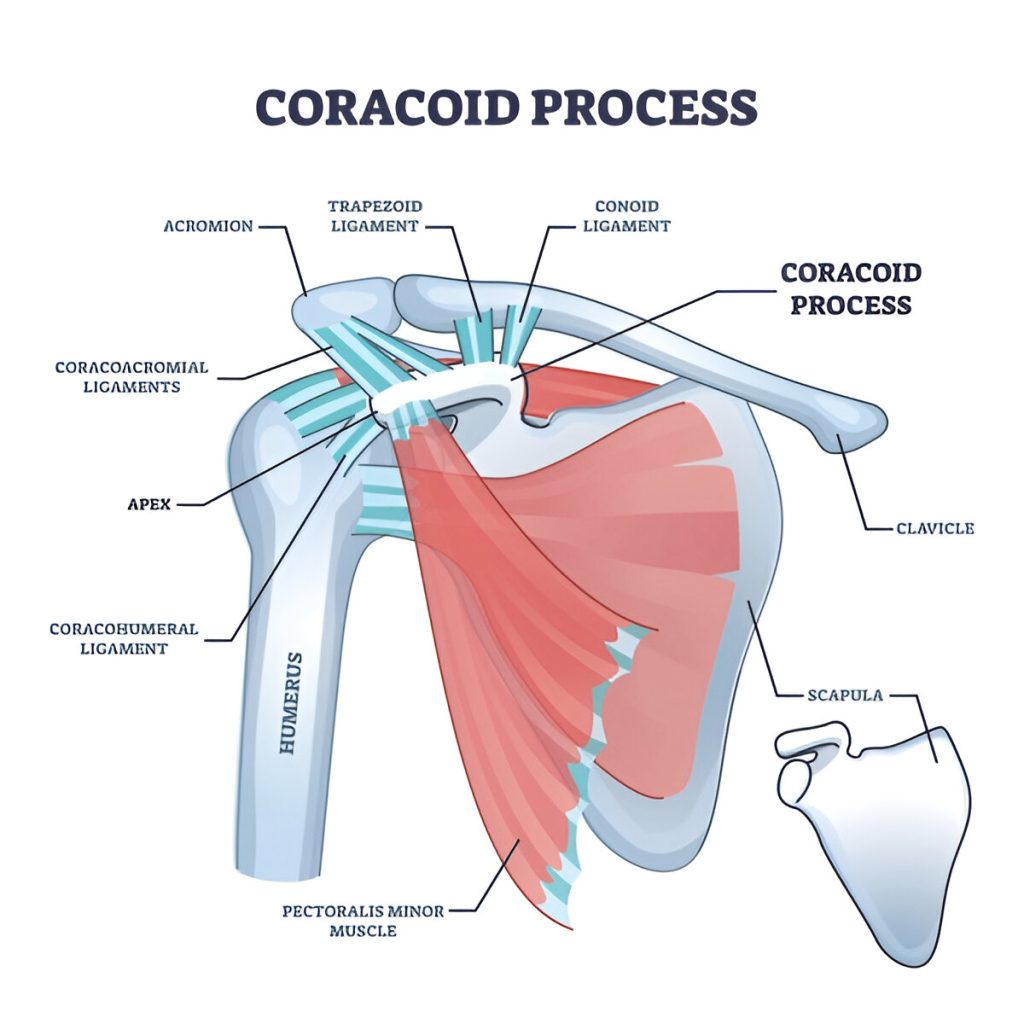Understanding Knee Anatomy
The shoulder is the most mobile joint in the human body. It allows you to lift, throw, push, and rotate your arm in nearly every direction. But that mobility also makes it vulnerable to injury—especially for athletes and physically active individuals.
The Bones of the Shoulder
Three bones form the shoulder:
Humerus – The upper arm bone
Scapula (shoulder blade) – Anchors muscles and forms part of the joint
Clavicle (collarbone) – Connects the shoulder to the ribcage and sternum
These bones form two main joints:
Glenohumeral joint – Ball-and-socket joint between humerus and scapula
Acromioclavicular (AC) joint – Between the clavicle and the scapula’s acromion

The Rotator Cuff: Stabilizers in Motion
The rotator cuff is a group of four muscles and tendons that stabilize the glenohumeral joint:
Supraspinatus
Infraspinatus
Teres minor
Subscapularis
These muscles keep the humeral head centered in the socket while allowing rotation and lifting.

Muscles of the Shoulder
In addition to the rotator cuff, larger muscles provide strength and power:
Deltoid – Main muscle responsible for lifting the arm
Trapezius – Stabilizes the shoulder and moves the scapula
Pectoralis major/minor – Control shoulder flexion and adduction
Latissimus dorsi – Helps with internal rotation and extension

Ligaments and Capsule
The joint capsule encloses the glenohumeral joint, lined by the synovial membrane which secretes lubricating fluid.
Glenohumeral ligaments strengthen the capsule and prevent dislocation.
Coracoacromial and coracoclavicular ligaments stabilize the AC joint and limit excessive motion.
Cartilage and Bursa
Glenoid labrum – A ring of cartilage that deepens the socket for joint stability
Bursae – Fluid-filled sacs that reduce friction between muscles, tendons, and bones. The subacromial bursa is the most clinically significant.

Common Shoulder Conditions
Rotator cuff tears
Shoulder impingement
Frozen shoulder (adhesive capsulitis)
Shoulder dislocation or instability
Osteoarthritis
These conditions often result from repetitive stress, trauma, or age-related degeneration.
Why Shoulder Health Matters
Healthy shoulder function is essential for athletes, workers, and daily life. When the shoulder is injured, it can severely limit your range of motion and affect quality of life.
At Kerlan-Jobe Institute, our orthopedic and sports medicine specialists are nationally recognized for diagnosing and treating all forms of shoulder injury—from mild inflammation to surgical repair of complex tears.
